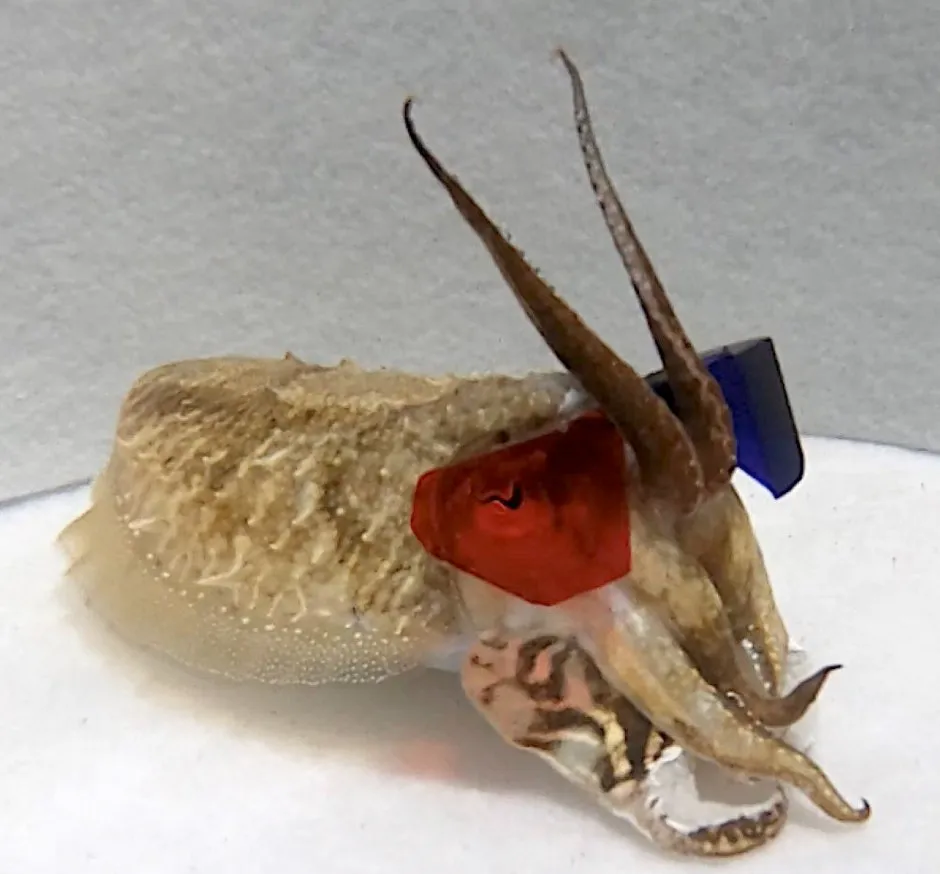While you wouldn’t expect to find yourself sitting next to a cuttlefish in the cinema, the world of 3D movies and glasses is not closed-off to the creatures.
Scientists in the US built an underwater theatre and equipped the cephalopods with specialised specs to investigate how they determine the best distance to strike moving prey with their tentacles.
They use stereopsis (binocular vision) to perceive depth, and may even be better than humans, the study found.Stereopsis is the process of comparing the images and is the same way humans analyse depth.
In order to successfully strike, the creatures must compute depth to position themselves at the correct distance from the prey.If they are too close, the prey may be spooked and escape, and if they are too far their tentacles will not reach.
Read more about cephalopods:
- Octopuses: playful, choosy and smarter than you think
- How do octopuses move their limbs if they have no bones?
To test how the animals figure out the correct distance, researchers trained cuttlefish to wear 3D glasses and strike at images of two walking shrimp, each a different colour displayed on a computer screen at the Marine Biological Laboratory in Woods Hole, Massachusetts.
The images were offset, allowing scientists to determine if the cuttlefish were comparing images between the left and the right eyes to gather information about distance to their prey.Depending on the image offset, the cuttlefish would perceive the shrimp to be either in front of or behind the screen.According to the offset, the sea-dwellers struck too close to or too far from the screen.

Trevor Wardill, assistant professor at the department of ecology, evolution and behaviour at the University of Minnesota, said: “How the cuttlefish reacted to the disparities clearly establishes that cuttlefish use stereopsis when hunting.
“When only one eye could see the shrimp, meaning stereopsis was not possible, the animals took longer to position themselves correctly.
“When both eyes could see the shrimp, meaning they utilised stereopsis, it allowed cuttlefish to make faster decisions when attacking. This can make all the difference in catching a meal.”
Scientists also found the mechanism that underpins cuttlefish stereopsis is likely different from humans due to the cuttlefish successfully determining the distance from anti-correlated stimulus – the left and the right eye images have the same pattern, but are reversed in luminance.Humans cannot to do this reliably.
Paloma Gonzalez-Bellido, assistant professor at the department of ecology, evolution and behaviour in the College of Biological Sciences, said: “Our research shows there must be an area in their brain that compares the images from a cuttlefish’s left and right eye, and computes their differences.”
In the study published in Science Advances, researchers also suggest that unlike other cephalopods – squid and octopus – cuttlefish have the ability to rotate their eyes to a forward-facing position.They add that it is possible they are the only cephalopods with the ability to compute and use stereopsis.